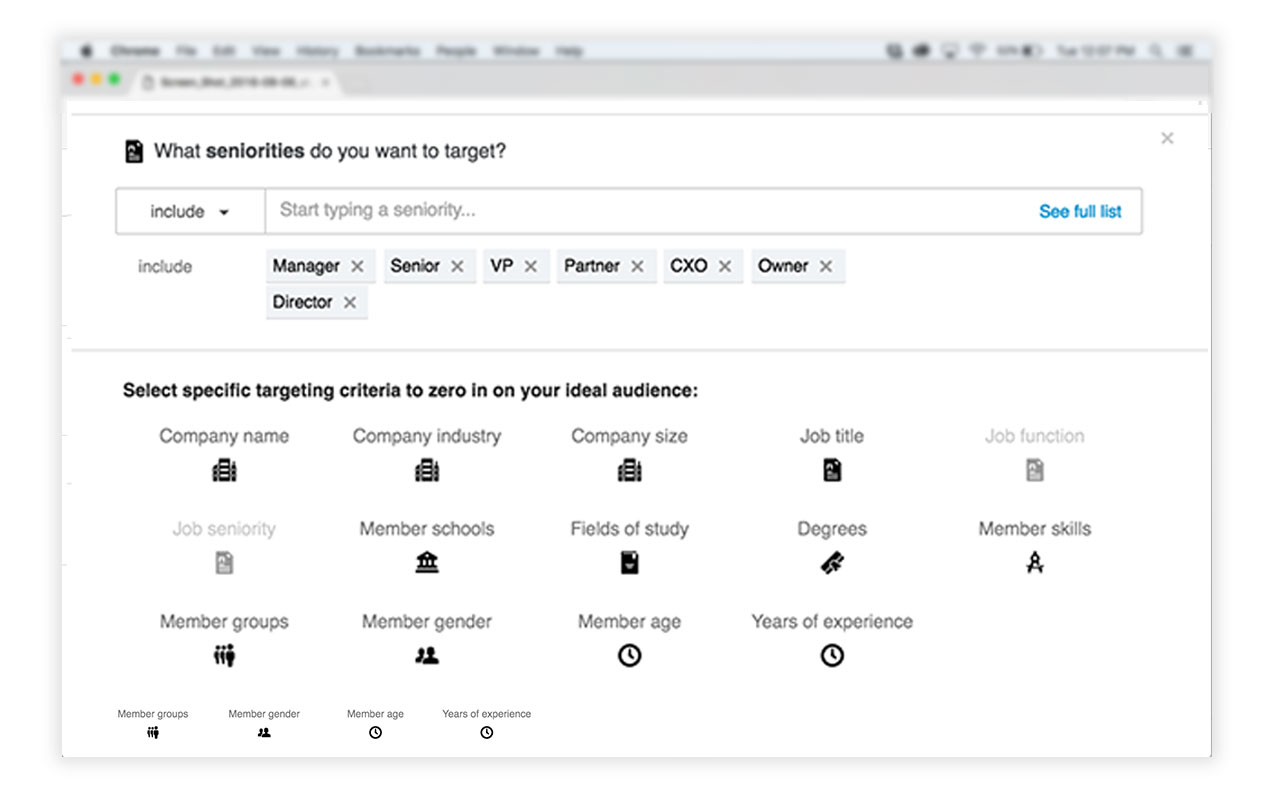LinkedIn has been hailed as the ideal ad platform for B2B companies that want to get in touch with potential clients because it focuses exclusively on professionals and has unique targeting capabilities.
But is it everything people are making it out to be?
We’re not so sure.
A social media site designed to save B2B advertisers
LinkedIn began in 2003 and has grown into a massive hub for recruiters, job seekers, and people eager to grow their career. It’s also become a hub for advertisers who want to market to professionals.
Unlike Google AdWords and Facebook Advertising, though, LinkedIn has kept its advertising platform lean and focused on a few key LinkedIn ad formats:
Sponsored Content
Sponsored posts are “native” ads that show up in your target users’ feed of status updates, blending in with the rest of the posts they see as they scroll.
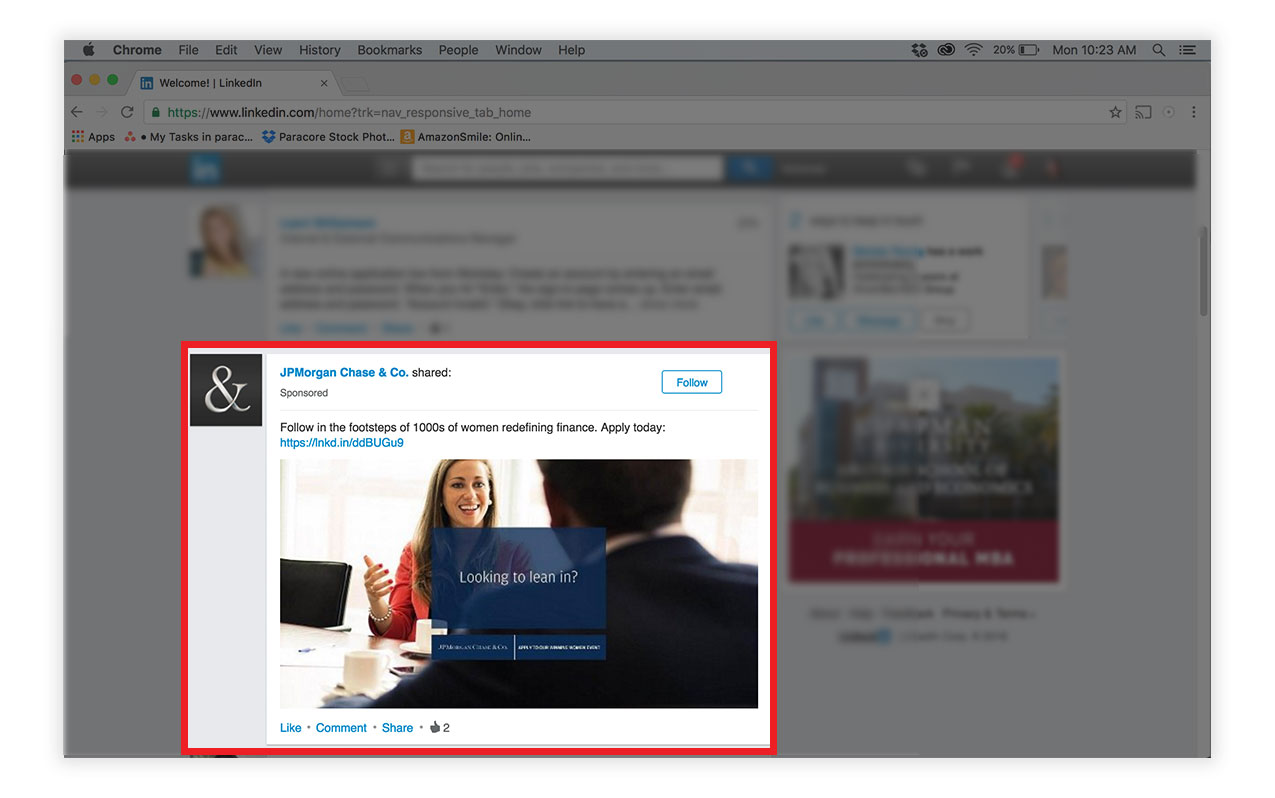
Text Ads
LinkedIn Text Ads are simple ads with a headline, a few lines of text, and a small image. They appear in the right sidebar on LinkedIn’s desktop view.
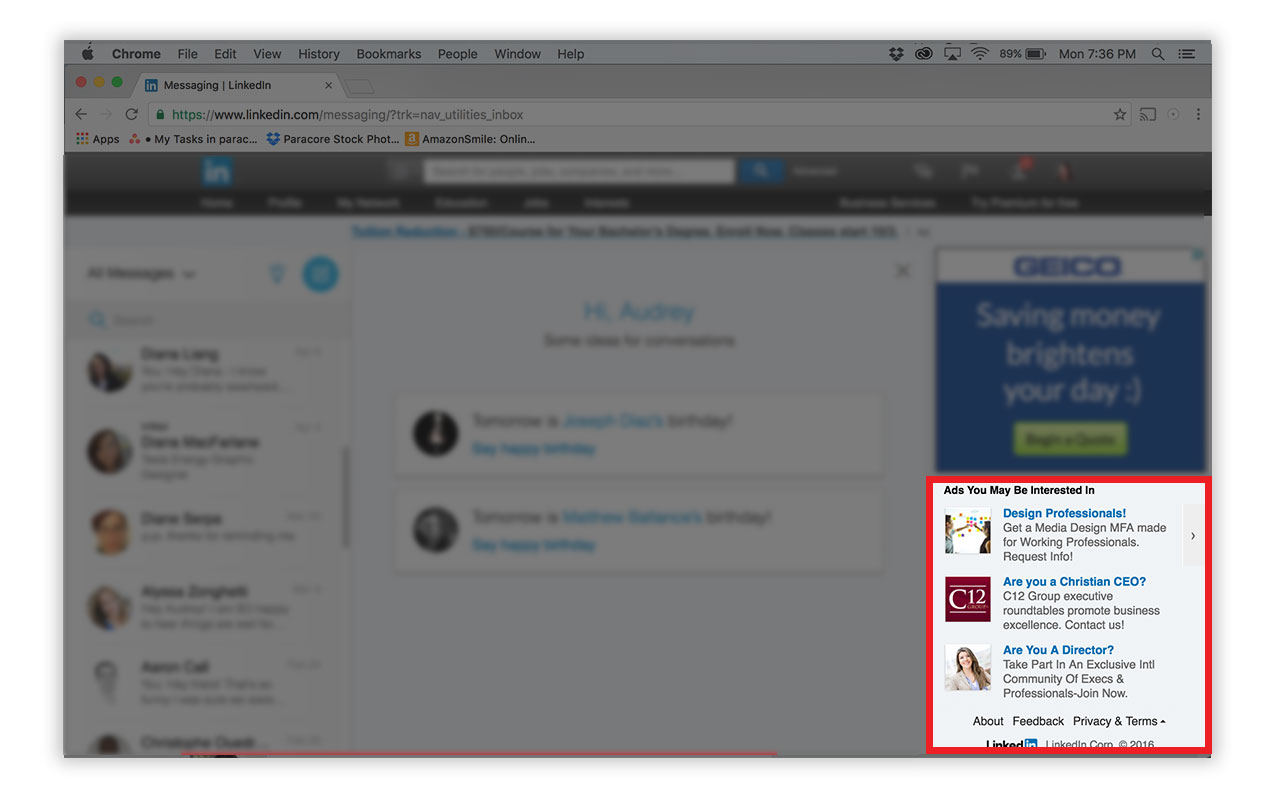 Display Ads
Display Ads
LinkedIn Display Ads are full-image ads that show up on desktop only. They work like any other display ad, but can be hyper-targeted using LinkedIn’s audience filters.
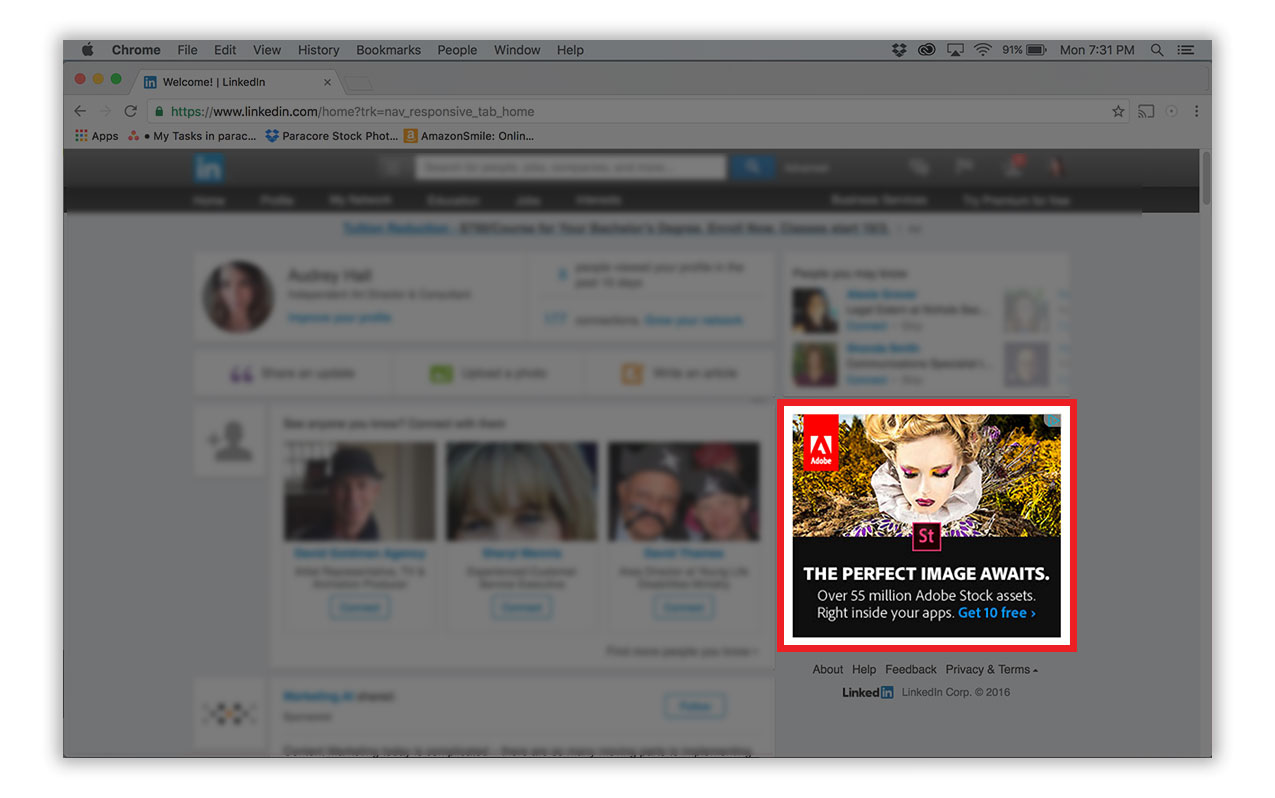 Sponsored InMail
Sponsored InMail
LinkedIn typically requires you to have a first-degree connection with someone to send them a message. However, with Sponsored InMail, you can message anyone without being connected to them.
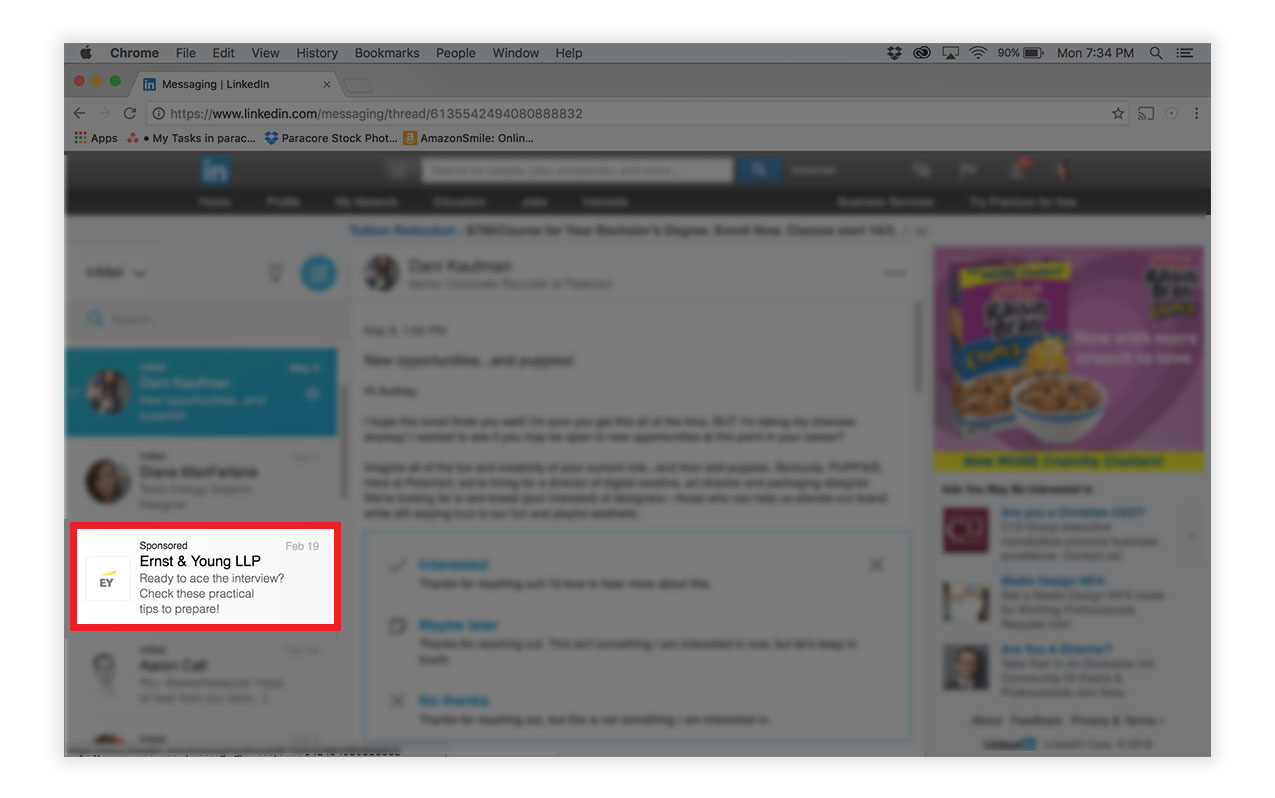 Dynamic Ads
Dynamic Ads
Dynamic Ads are a series of LinkedIn ads that bridge the gap between your promotion and the user’s activity. So for example, if you’ve recently started a company page on LinkedIn, you can use a Follow Company Ad to encourage users to follow your page.
There are also Recommendation Ads, which let you highlight a specific product or service that users can recommend to their own followers. If you have a LinkedIn Group, you can even use Dynamic Ads to attract new members.
Will LinkedIn be a hero or a zero?
For now, our honest opinion is that LinkedIn ads leave much to be desired.
In fact, we only recommend them in specific situations because most businesses find they don’t provide enough bang for their buck, especially when there are other options available.
That said, there are some big changes on the horizon that might make us eat our words.
A few months ago, Microsoft announced that it would be acquiring LinkedIn. While this hasn’t changed LinkedIn’s advertising platform yet, we can’t help but be reminded of a similar situation: when Facebook bought Instagram.
When Instagram was acquired, Facebook integrated Instagram’s advertising capabilities into their Facebook Ads platform. As a result, advertisers could manage ads for both sites through Facebook. While Facebook’s Ad Manager is far from perfect, it was still much more robust than Instagram’s.
Our hunch is that the same thing may happen with LinkedIn.
See, Microsoft owns Bing, which has an advertising platform that’s similar to Google AdWords. With their acquisition of LinkedIn, we hope that LinkedIn ads will be integrated into Bing’s ad manager.
That would likely smooth out the clunkier aspects of LinkedIn ads and make them much more useful and affordable for advertisers. It might also provide opportunities for re-marketing between Bing and LinkedIn since one network could be tracking traffic on both platforms.
How to tell if LinkedIn Ads will come to the rescue for your business
While we’re crossing our fingers for a Bing integration, you might be wondering if you should wait around or get started with LinkedIn ads now. Here are the questions you should ask yourself before diving in.
Do you market to other businesses?
LinkedIn is like a business version of Facebook, so your targeting is limited to business professionals. This is good news for B2Bs, but not ideal if your primary audience is consumers.
Do you know exactly whom you’re targeting?
One of the best parts of LinkedIn advertising is the ability to target people by job title, industry, and company size. But in order to use this filter well, you’ll need to understand all of your decision makers and stakeholders.
For example, are the people who are buying your product or service the end user? If not, should you serve ads to the decision maker or the user?
To get the best results with LinkedIn ads and avoid wasting budget, make sure you think through these types of questions so you can target the right people.
Do you have a healthy ad budget?
Unlike other platforms, LinkedIn requires a relatively high minimum investment. LinkedIn says you must invest at least $2 per bid for cost-per-click or cost-per-impression ads, as well as a $10 daily minimum. Because of these requirements are higher than other networks, we’ve seen LinkedIn display ads cost 50-100% more than display ads on other platforms.
Plus, even with a generous ad spend, it can take quite a bit of time (and, therefore, money) to see results.
Are you already getting good results with other platforms?
LinkedIn might be a good way to expand your reach if you’re already doing well on Google and LinkedIn. However, we rarely suggest it as the first option because of its high costs and frequent lack of results.
Have no fear: ParaCore is here
In theory, LinkedIn should be perfect for all B2Bs. But in reality, that’s not the case.
LinkedIn may not be the hero you’ve been searching for, but we’re familiar with other tactics that could still save the day. Curious which ad platforms would be the best for your business? Sign up for a free consultation to find out.
Related Posts
- What Is The Difference Between PPC and SEM?
- PC Audit Handbook: How to Analyze Your PPC Campaigns
- The Best PPC Tools of 2022, As Told by PPC Experts
- Beginner’s Guide to UTM Tags & Tracking
- Generate Leads with Facebook Lead Ads
- Cost-per-click vs. cost-per-acquisition: Are you tracking the right PPC metrics?
- How Does Pay Per Click Work?
- Benefits of PPC
- Why Should I Invest in PPC?
- What is Google PPC Advertising?
- Facebook Retargeting Strategy
- Introduction to ManyChat
- Case Study: Return on Ad Spend Optimization
- 🎁🎄 Holiday Ad Spend Strategy
- Should You Be Running Branded Ads?
- SEO vs SEM
- CTAs for YouTube Ads
- Case Study: 258% Increase in Conversions
- Traffic Campaign Strategy
- No Captions on Facebook Ads or YouTube? You’re Killing Performance
- LinkedIn InMail Website Re-targeting
